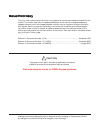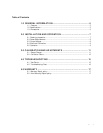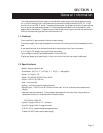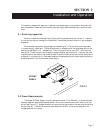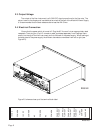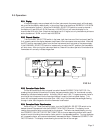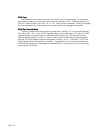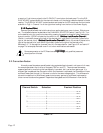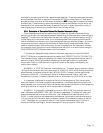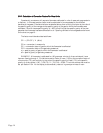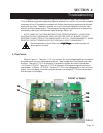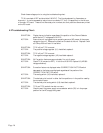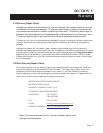Page 14
3.2.2 Calcula3.2.2 Calcula
3.2.2 Calcula3.2.2 Calcula
3.2.2 Calcula
tion of Cortion of Cor
tion of Cortion of Cor
tion of Cor
rection Frection F
rection Frection F
rection F
actoractor
actoractor
actor
s Fs F
s Fs F
s F
or Mass Unitsor Mass Units
or Mass Unitsor Mass Units
or Mass Units
Occasionally, a customer will request a flowmeter calibrated in units of mass such as grams/min.
or lbs/hour. In this case, another factor must be calculated in to compensate for the different
densities of the gases. Calculate the factor as detailed above, then multiply this factor by the ratio of
the specific gravity of the new gas to the specific gravity of the gas for which the flowmeter was
calibrated. Since air has a specific gravity of 1.000, this will be just the specific gravity of the new
gas when the flowmeter has been calibrated for air. Specifc gravities for various gases can be found
on the chart on page 16 .
The factor would be calculated as follows:
CF
m
= (CF
2
/CF
1
) X (s2/s1)
CFm = conversion in mass units
CF1 = conversion factor of gas for which the flowmeter is calibrated
CF2 = conversion factor of the gas being measured
s1 = specific gravity of gas for which the flowmeter is calibrated
s2 = specific gravity of gas being measured
EXAMPLE: A flowmeter is calibrated for 100 grams per minute of nitrous oxide and it now
has neon flowing through it. Divide the correction factor of neon (1.38) by the correction factor of
nitrous oxide (.75), and multipliy by the ratio of the specific gravity of neon (.70) to the specific
gravity of nitrous oxide (1.54): (1.38/.75) X (.70/1.54) = 0.836. This is the number that must be
set per Section 2.5.4 for the display to automatically read out in grams per minute of neon.



